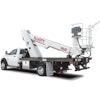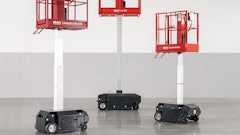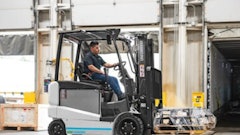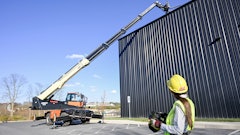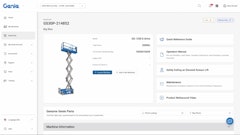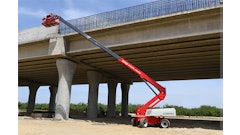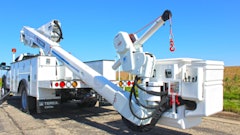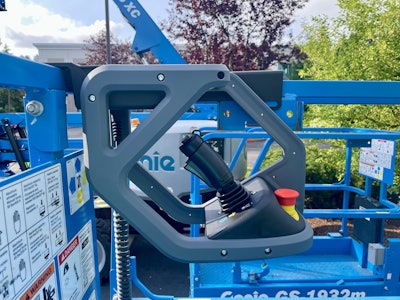
A new international standard is reshaping how controls are designed on mobile elevating work platforms (MEWPs), including boom lifts and scissor lifts. ISO 21455, titled Operator’s controls – Actuation, displacement, location and method of operation, was published in 2020 to improve operator safety and reduce the risk of accidents caused by inconsistent control layouts.
Australia is leading the way in implementation. The country’s national MEWP standard, AS/NZS 1418.10, is currently being revised to incorporate ISO 21455, with an effective date expected in September 2025. Other major standards bodies — including Europe’s EN 280 and North America’s ANSI A92 and CSA B354 — are expected to follow during upcoming revision cycles over the next five to seven years.
Key Changes to Note
The main objective of ISO 21455 is to standardize control functions across manufacturers so that machine movement consistently matches control input. For example, pulling a joystick back raises the platform, and pushing it forward lowers it — a change from older, non-standardized configurations.
Historically, MEWP control design has varied widely between manufacturers due to technological evolution, equipment updates and a lack of uniform design standards. This inconsistency has created challenges for operators switching between different machines.
Starting in September 2025, all MEWPs manufactured for use in Australia will need to meet the new ISO 21455 design requirements. Other regions are expected to align as their regulatory bodies update their standards.
Manufacturers Are Taking Action
Some manufacturers have already started incorporating ISO 21455 into their equipment designs. Companies like JLG and Skyjack, which participated in the ISO working group, are preparing their product lines to reflect these changes. According to a Skyjack technical bulletin, the company’s involvement in ISO TC 214 WG1 has helped influence consistent safety improvements across platforms.
As both legacy and updated machines circulate in the market, the need for operator awareness and documentation becomes increasingly important.
The Importance of Operator Training
With the coexistence of old and new control layouts, operator training must be model-specific. ANSI and CSA standards already mandate operator and supervisor training, safe use plans and other documentation. ISO 21455 reinforces the need for this training by adding new control behaviors that must be understood before safe operation can occur.
Operators should be trained on joystick direction, function actuation and how to read visual indicators such as direction arrows to reduce risk and increase efficiency.
The Role of ISO
While aligning joystick direction with machine movement is a key part of the standard, ISO 21455 also addresses several ergonomic concerns, including:
- The force required to actuate movement
- Proper spacing of controls for ease of use
- Grouping of similar functions to reduce user error
The standard was developed following studies linking MEWP accidents to control-related confusion and poor interface design. In response, the industry called on ISO to establish guidelines that would improve human-machine interaction.
The Bottom Line
ISO 21455 marks a major step towards a globally consistent approach to MEWP controls. As adoption spreads, rental companies and contractors will need to ensure their teams are trained on both old and new control designs. Proactive education and awareness will be essential for maximizing safety and productivity as the market transitions.


